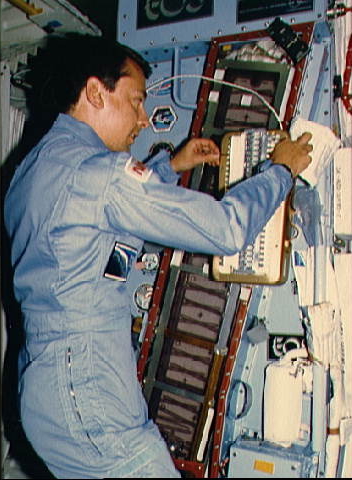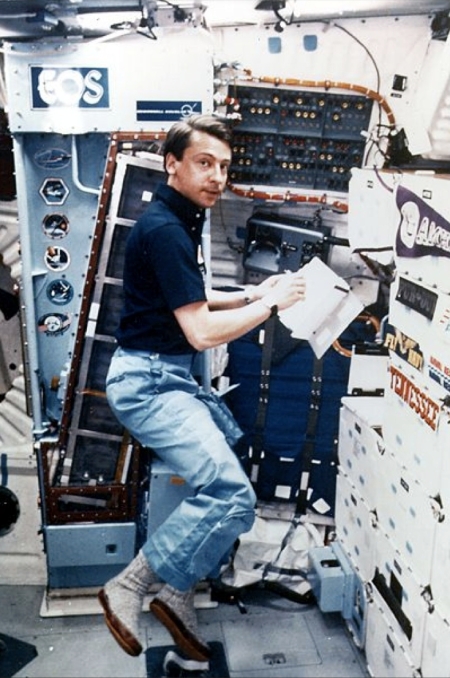The bit rate of human languages
Language scientists think they have determined that the universal bit rate for transmitting information across multiple languages is about 39 bits per second.
Scientists started with written texts from 17 languages, including English, Italian, Japanese, and Vietnamese. They calculated the information density of each language in bits—the same unit that describes how quickly your cellphone, laptop, or computer modem transmits information. They found that Japanese, which has only 643 syllables, had an information density of about 5 bits per syllable, whereas English, with its 6949 syllables, had a density of just over 7 bits per syllable. Vietnamese, with its complex system of six tones (each of which can further differentiate a syllable), topped the charts at 8 bits per syllable.
Next, the researchers spent 3 years recruiting and recording 10 speakers—five men and five women—from 14 of their 17 languages. (They used previous recordings for the other three languages.) Each participant read aloud 15 identical passages that had been translated into their mother tongue. After noting how long the speakers took to get through their readings, the researchers calculated an average speech rate per language, measured in syllables/second.
Some languages were clearly faster than others: no surprise there. But when the researchers took their final step—multiplying this rate by the bit rate to find out how much information moved per second—they were shocked by the consistency of their results. No matter how fast or slow, how simple or complex, each language gravitated toward an average rate of 39.15 bits per second, they report today in Science Advances. In comparison, the world’s first computer modem (which came out in 1959) had a transfer rate of 110 bits per second, and the average home internet connection today has a transfer rate of 100 megabits per second (or 100 million bits). [emphasis mine]
When I went to Russia the first time in 1995 I used to joke with my caving friends there that the real reason the U.S. won the cold war was that English words routinely used one syllable for the three required by Russian and thus we could get things done in one third the time. I would start listing comparable words, (for example “good” vs “khah-rah-shoh” and “please” vs “pa-ZHAL-sta”) and challenge them to come up with any example where the Russian word had fewer syllables. It drove them crazy because they couldn’t do it.
I was joking of course. It makes sense that the information rates should actually be pretty much the same, as this study suggests. However, the highlighted words also suggest that the subtle differences should also not be ignored.
Language scientists think they have determined that the universal bit rate for transmitting information across multiple languages is about 39 bits per second.
Scientists started with written texts from 17 languages, including English, Italian, Japanese, and Vietnamese. They calculated the information density of each language in bits—the same unit that describes how quickly your cellphone, laptop, or computer modem transmits information. They found that Japanese, which has only 643 syllables, had an information density of about 5 bits per syllable, whereas English, with its 6949 syllables, had a density of just over 7 bits per syllable. Vietnamese, with its complex system of six tones (each of which can further differentiate a syllable), topped the charts at 8 bits per syllable.
Next, the researchers spent 3 years recruiting and recording 10 speakers—five men and five women—from 14 of their 17 languages. (They used previous recordings for the other three languages.) Each participant read aloud 15 identical passages that had been translated into their mother tongue. After noting how long the speakers took to get through their readings, the researchers calculated an average speech rate per language, measured in syllables/second.
Some languages were clearly faster than others: no surprise there. But when the researchers took their final step—multiplying this rate by the bit rate to find out how much information moved per second—they were shocked by the consistency of their results. No matter how fast or slow, how simple or complex, each language gravitated toward an average rate of 39.15 bits per second, they report today in Science Advances. In comparison, the world’s first computer modem (which came out in 1959) had a transfer rate of 110 bits per second, and the average home internet connection today has a transfer rate of 100 megabits per second (or 100 million bits). [emphasis mine]
When I went to Russia the first time in 1995 I used to joke with my caving friends there that the real reason the U.S. won the cold war was that English words routinely used one syllable for the three required by Russian and thus we could get things done in one third the time. I would start listing comparable words, (for example “good” vs “khah-rah-shoh” and “please” vs “pa-ZHAL-sta”) and challenge them to come up with any example where the Russian word had fewer syllables. It drove them crazy because they couldn’t do it.
I was joking of course. It makes sense that the information rates should actually be pretty much the same, as this study suggests. However, the highlighted words also suggest that the subtle differences should also not be ignored.



